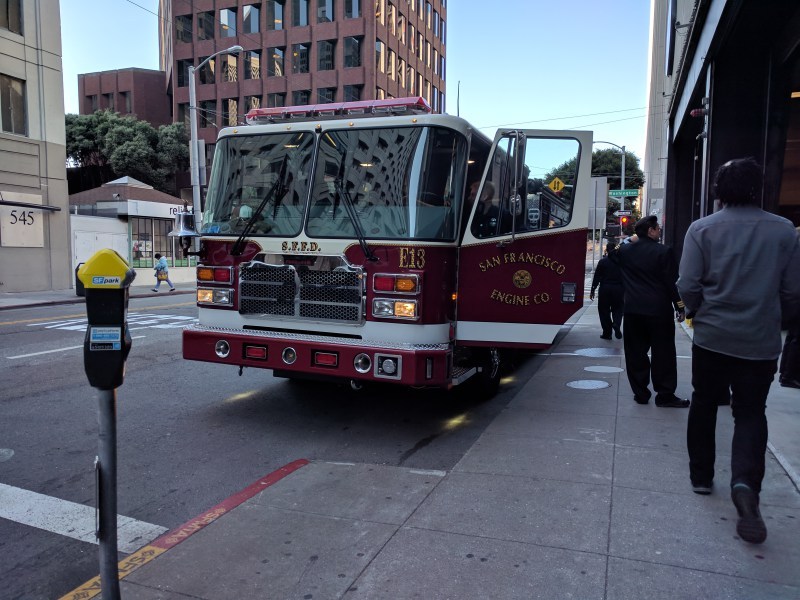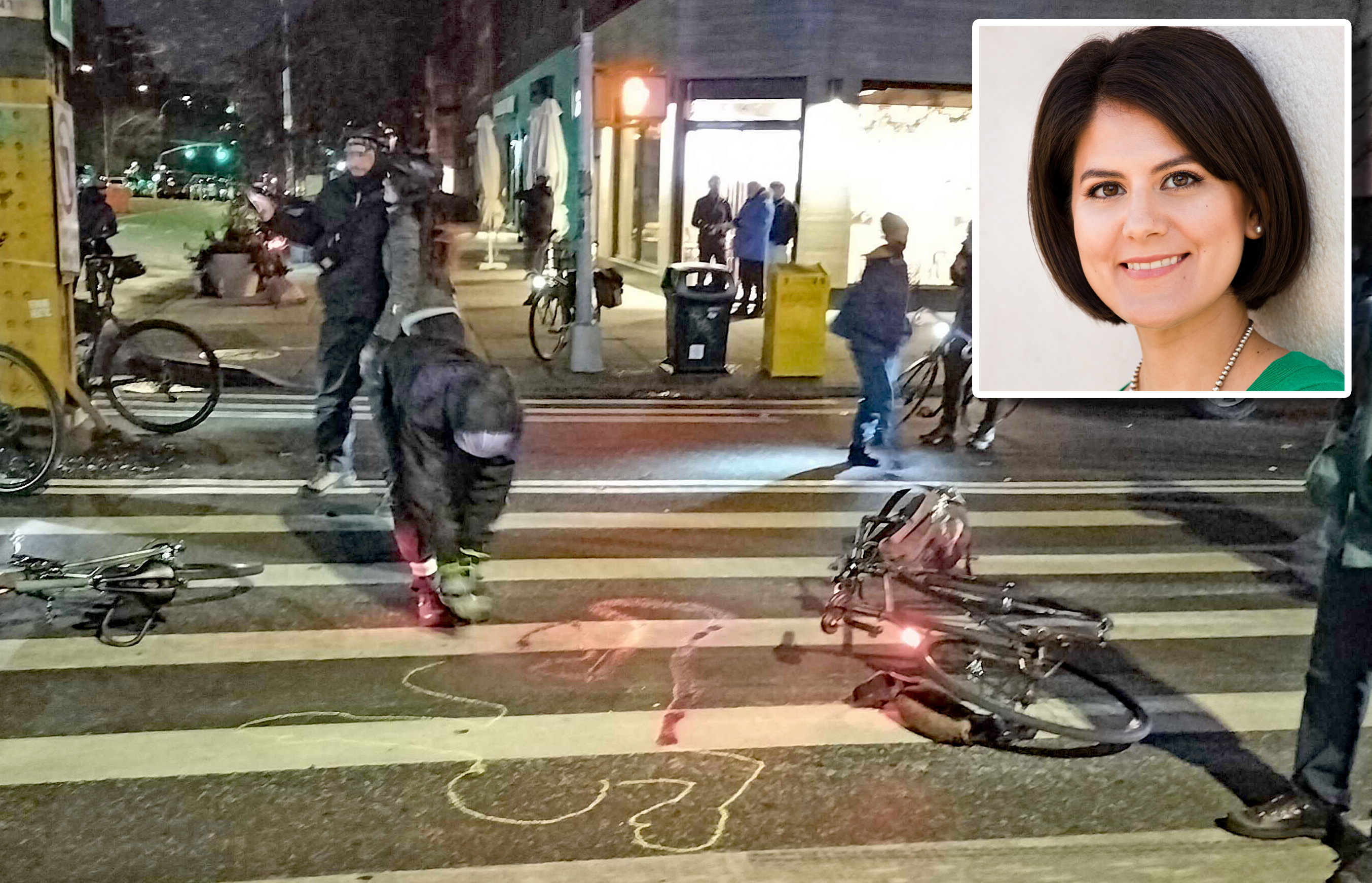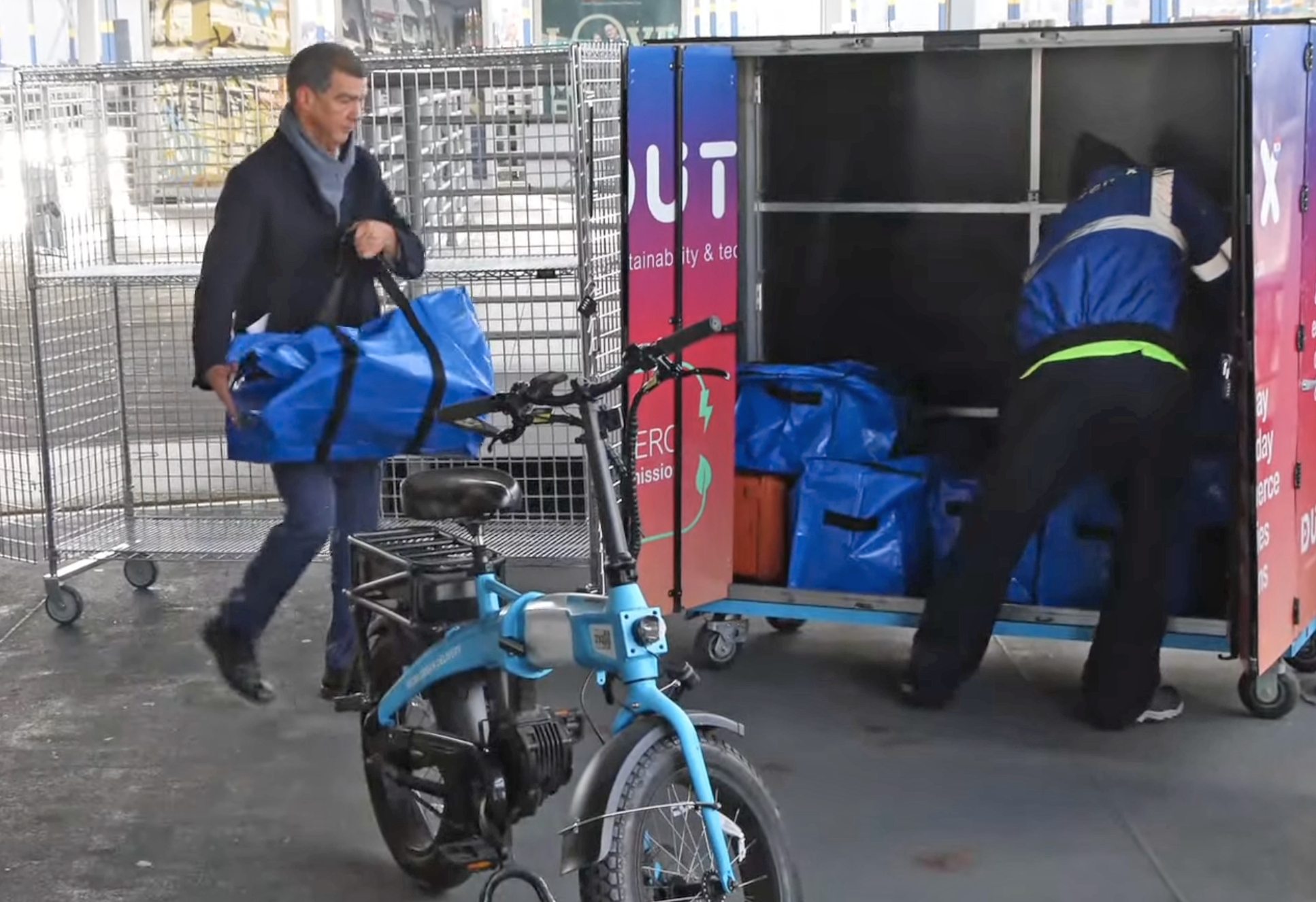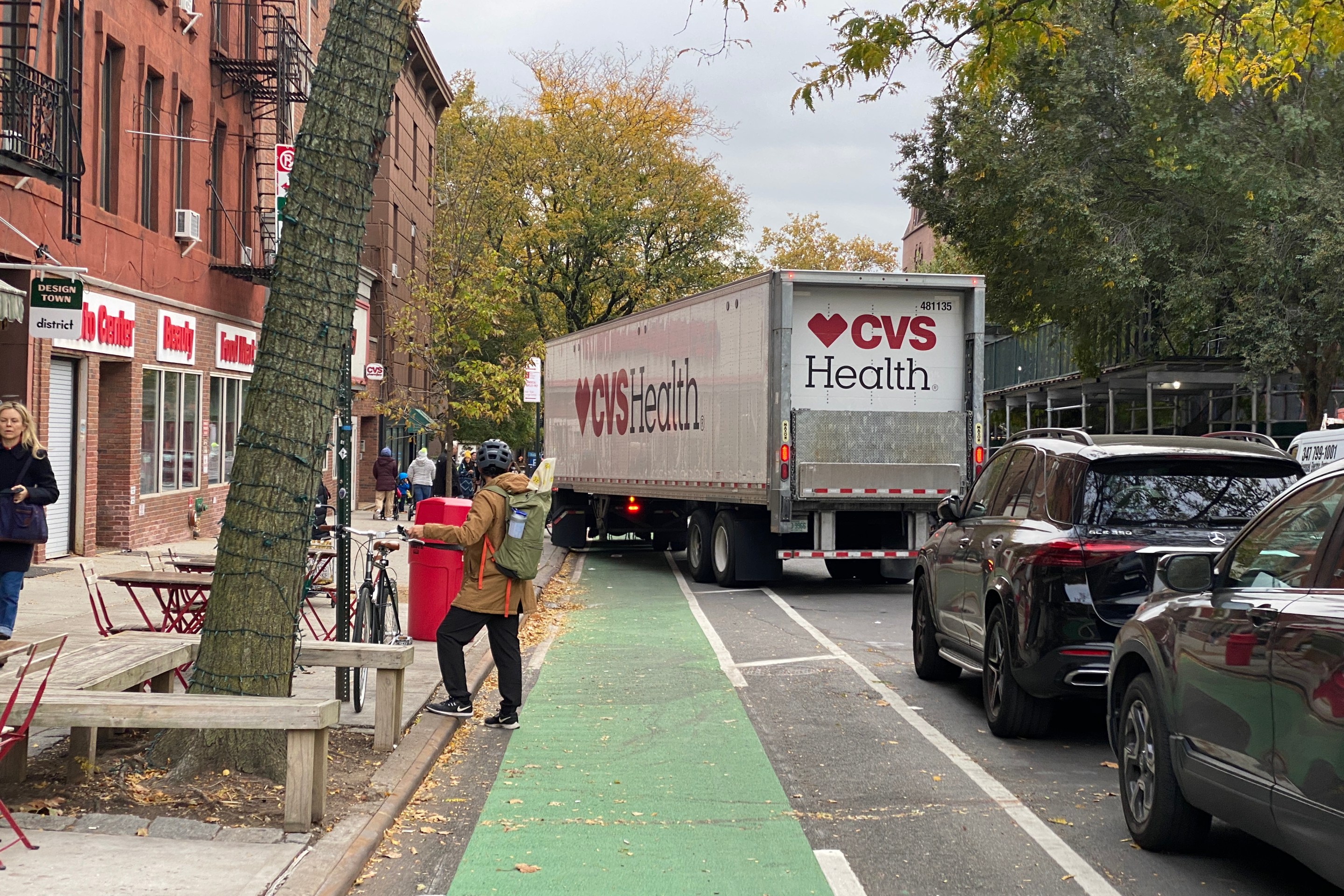Island Press has granted Streetsblog the exclusive right to publish excerpts from Jeff Speck’s new book, Walkable City Rules. We are sharing them in conjunction with the book’s release in October.
Rule 51: Expand the Fire Chief’s Mandate
Rewrite the fire chief’s mandate to optimize public safety, not response times. Replace the 20-foot clear and minimum curb radii with more precise measures. Do not add or keep unwarranted signals in the name of preemption. Size new fire trucks to the community and not vice versa.
Perhaps the most ironic day in the life of every city planner is the one on which she discovers that her greatest opponent in making her city’s streets safer is the fire chief. How this bizarre circumstance has come to occur in city after city across the United States is a veritable morality play on the topics of siloed thinking, the confusion of ends and means, and Murphy’s Law. It goes something like this:
A faster response time is good, but not at the expense of life safety.
The fire chief’s job performance is typically judged on response time. The fire department’s budget is often based on the number of calls that fire trucks respond to. These two facts conspire to replace a fire chief’s natural mandate, optimizing the life safety of the community, with a much narrower focus: sending out lots of trucks, and getting them to their destinations quickly.
Into this mix, we can throw two additional ingredients: union make-work and the fire-equipment up-sell. Over the years, firefighters’ unions have introduced contractual language stipulating the minimum number of firefighters on a call. Simultaneously, firefighting equipment suppliers have infiltrated the ranks of the organizations drafting official guidelines for firefighting equipment. The unsurprising outcome: ever larger fire trucks.
As a result, most cities have found themselves under the protection of fire chiefs who, when introduced to the planning conversation, advocate for three things that make their cities more dangerous: wider streets, broader intersections, and the introduction of unwarranted traffic signals.
Wider streets: Rule 50 discussed eight-foot lanes and two-way, 12-foot lanes, two things that increase safety in most older, walkable cities, and which are impermissible according to something called the “20-foot clear.” The 20-foot clear appears in the Universal Fire Code — not a law, but a standard that many cities adopt—and requires that all streets maintain 20 feet of clear space between any obstructions such as parked cars. Many fire chiefs apply this law indiscriminately, not realizing that it hails from cul-de-sac suburbia, where there is only one path to each fire. When a street can be entered from both ends, there is no longer a need to do what the 20-foot clear allows, which is to park a big truck, put down its stabilizers, and drive another big truck past it. Some fire chiefs, but not all, are willing to reject the 20-foot clear once they learn that it was written for cul-de-sacs.
Broader intersections: Many cities have minimum curb return radii for their corners, put in place to serve large fire trucks. The curb return radius measures how much swoop there is at the corner. Larger swoops allow big trucks to turn the corner without going into the opposing lane; they also allow drivers to speed around corners without applying the brake, while lengthening the amount of time that pedestrians are exposed to oncoming traffic. In most cities, these standards have been applied as a short cut to someone doing the (not very) hard work of designing each intersection independently with a fire-truck-turning template to make sure that the trucks can fit. When this is done properly, the curb radii become much smaller, especially when it is understood that fire trucks are allowed to cross into the opposing lane when making a turn. (They have sirens.)
Unwarranted traffic signals: As demonstrated ahead in Rule 76, replacing unwarranted signals with four-way stop signs results in great reductions in injuries. But fire chiefs prefer signals, because only with signals can you have signal preemption, which allows you to clear an intersection of cars as the fire truck approaches, speeding response time.
And a faster response time is good. But, as with the other two examples, not at the expense of life safety. If wider streets, broader intersections, and unwarranted signals all improve response time, while killing and maiming untold numbers of citizens in the process, it is clear that the cart is leading the horse. It will continue to do so until mayors and city managers provide their fire chiefs with different performance metrics, and a different job mandate.






